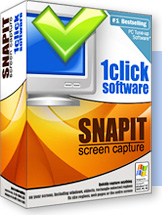Here’s a jumbo build of John the Ripper 1.7.6 compiled using MinGW/GCC 4.5.0. Revision 7 of the jumbo patch and OpenSSL 1.0.0 were used.
Benchmarking: Traditional DES [128/128 BS SSE2]... DONE
Many salts: 2860K c/s
Only one salt: 2378K c/s
Benchmarking: BSDI DES (x725) [128/128 BS SSE2]... DONE
Many salts: 95093 c/s
Only one salt: 93132 c/s
Benchmarking: FreeBSD MD5 [32/32]... DONE
Raw: 11635 c/s
Benchmarking: OpenBSD Blowfish (x32) [32/32]... DONE
Raw: 701 c/s
Benchmarking: Kerberos AFS DES [48/64 4K MMX]... DONE
Short: 319531 c/s
Long: 1046K c/s
Benchmarking: LM DES [128/128 BS SSE2]... DONE
Raw: 14351K c/s
Benchmarking: NT MD4 [128/128 SSE2 + 32/32]... DONE
Raw: 19418K c/s
Benchmarking: Mac OS X 10.4+ salted SHA-1 [32/32]... DONE
Many salts: 4934K c/s
Only one salt: 4454K c/s
Benchmarking: M$ Cache Hash [Generic 1x]... DONE
Many salts: 22610K c/s
Only one salt: 8376K c/s
Benchmarking: Apache MD5 [32/32]... DONE
Raw: 11752 c/s
Benchmarking: HMAC MD5 SSE2 [hmac-md5 SSE2]... DONE
Raw: 3862K c/s
Benchmarking: Post.Office MD5 [STD]... DONE
Many salts: 4152K c/s
Only one salt: 4165K c/s
Benchmarking: Raw MD5 SSE2 [raw-md5 SSE2 16x4]... DONE
Raw: 11658K c/s
Benchmarking: md5_gen(0): md5($p) (raw-md5) SSE2 [md5-gen SSE2 16x4]... DONE
Raw: 12219K c/s
Benchmarking: md5_gen(1): md5($p.$s) (joomla) SSE2 [md5-gen SSE2 16x4]... DONE
Many salts: 6990K c/s
Only one salt: 5343K c/s
Benchmarking: md5_gen(2): md5(md5($p)) (e107) SSE2 [md5-gen SSE2 16x4]... DONE
Raw: 4969K c/s
Benchmarking: md5_gen(3): md5(md5(md5($p))) SSE2 [md5-gen SSE2 16x4]... DONE
Raw: 3194K c/s
Benchmarking: md5_gen(4): md5($s.$p) (OSC) SSE2 [md5-gen SSE2 16x4]... DONE
Many salts: 8015K c/s
Only one salt: 7861K c/s
Benchmarking: md5_gen(5): md5($s.$p.$s) SSE2 [md5-gen SSE2 16x4]... DONE
Many salts: 8363K c/s
Only one salt: 7139K c/s
Benchmarking: md5_gen(6): md5(md5($p).$s) SSE2 [md5-gen SSE2 16x4]... DONE
Many salts: 12473K c/s
Only one salt: 4282K c/s
Benchmarking: md5_gen(7): md5(md5($p).$s) (vBulletin) SSE2 [md5-gen SSE2 16x4]... DONE
Many salts: 13035K c/s
Only one salt: 4321K c/s
Benchmarking: md5_gen(8): md5(md5($s).$p) SSE2 [md5-gen SSE2 16x4]... DONE
Many salts: 4505K c/s
Only one salt: 4112K c/s
Benchmarking: md5_gen(9): md5($s.md5($p)) SSE2 [md5-gen SSE2 16x4]... DONE
Many salts: 6990K c/s
Only one salt: 4181K c/s
Benchmarking: md5_gen(10): md5($s.md5($s.$p)) SSE2 [md5-gen SSE2 16x4]... DONE
Many salts: 3971K c/s
Only one salt: 3572K c/s
Benchmarking: md5_gen(11): md5($s.md5($p.$s)) SSE2 [md5-gen SSE2 16x4]... DONE
Many salts: 4332K c/s
Only one salt: 3986K c/s
Benchmarking: md5_gen(14): md5($s.md5($p).$s) SSE2 [md5-gen SSE2 16x4]... DONE
Many salts: 6354K c/s
Only one salt: 3971K c/s
Benchmarking: md5_gen(17): phpass ($P$ or $H$) SSE2 [md5-gen SSE2 16x4]... DONE
Many salts: 8322 c/s
Only one salt: 8144 c/s
Benchmarking: PHPass MD5 SSE2 [phpass-MD5 SSE2]... Using phpass mode, by linking to md5_gen(17) functions DONE
Many salts: 8263 c/s
Only one salt: 7815 c/s
Benchmarking: IPB2 MD5 [Invision Power Board 2.x salted MD5]... DONE
Many salts: 3923K c/s
Only one salt: 2349K c/s
Benchmarking: Raw SHA-1 SSE2 [raw-sha1 SSE2]... DONE
Raw: 7825K c/s
Benchmarking: Kerberos v4 TGT [krb4 DES]... DONE
Raw: 3557K c/s
Benchmarking: Kerberos v5 TGT [krb5 3DES (des3-cbc-sha1)]... DONE
Raw: 58670 c/s
Benchmarking: Netscape LDAP SHA SSE2 [SHA-1]... DONE
Raw: 10894K c/s
Benchmarking: Netscape LDAP SSHA SSE2 [salted SHA-1]... DONE
Many salts: 13740K c/s
Only one salt: 9742K c/s
Benchmarking: OpenLDAP SSHA [salted SHA-1]... DONE
Many salts: 4946K c/s
Only one salt: 4601K c/s
Benchmarking: Eggdrop [blowfish]... DONE
Raw: 29308 c/s
Benchmarking: Oracle [oracle]... DONE
Raw: 1322K c/s
Benchmarking: Oracle 11g [oracle11]... DONE
Many salts: 4969K c/s
Only one salt: 4483K c/s
Benchmarking: MYSQL [mysql]... DONE
Raw: 1806K c/s
Benchmarking: MySQL 4.1 double-SHA-1 SSE2 [mysql-sha1 SSE2]... DONE
Raw: 6021K c/s
Benchmarking: Lotus5 [Lotus v5 Proprietary]... DONE
Raw: 125067 c/s
Benchmarking: More Secure Internet Password [RSA MD defined by BSAFE 1.x - Lotus v6]... DONE
Many salts: 131995 c/s
Only one salt: 78204 c/s
Benchmarking: LM C/R DES [netlm]... DONE
Many salts: 775573 c/s
Only one salt: 757093 c/s
Benchmarking: NTLMv1 C/R MD4 DES [netntlm]... DONE
Many salts: 1080K c/s
Only one salt: 1045K c/s
Benchmarking: LMv2 C/R MD4 HMAC-MD5 [netlmv2]... DONE
Many salts: 754913 c/s
Only one salt: 744198 c/s
Benchmarking: NTLMv2 C/R MD4 HMAC-MD5 [netntlmv2]... DONE
Many salts: 667882 c/s
Only one salt: 687139 c/s
Benchmarking: HalfLM C/R DES [nethalflm]... DONE
Many salts: 1857K c/s
Only one salt: 1768K c/s
Benchmarking: MSCHAPv2 C/R MD4 DES [mschapv2]... DONE
Many salts: 1094K c/s
Only one salt: 1060K c/s
Benchmarking: MS-SQL SSE2 [ms-sql SSE2]... DONE
Many salts: 14364K c/s
Only one salt: 10292K c/s
Benchmarking: MS-SQL05 SSE2 [ms-sql05 SSE2]... DONE
Many salts: 14376K c/s
Only one salt: 10106K c/s
Benchmarking: EPiServer SID Hashes [SHA-1]... DONE
Many salts: 4750K c/s
Only one salt: 4601K c/s
Benchmarking: PHPS MD5 SSE2 [MD5(MD5($pass).$salt) SSE2]... Using phps mode, by linking to md5_gen(6) functions DONE
Many salts: 13899K c/s
Only one salt: 4431K c/s
Benchmarking: MYSQL_fast [mysql-fast]... DONE
Raw: 27191K c/s
Benchmarking: PIX MD5 SSE2 [pix-md5 SSE2]... DONE
Raw: 11650K c/s
Benchmarking: SAP CODVN G (PASSCODE) [sapg]... DONE
Many salts: 1605K c/s
Only one salt: 1399K c/s
Benchmarking: SAP BCODE [sapb]... DONE
Many salts: 1965K c/s
Only one salt: 1640K c/s
Benchmarking: Netscreen MD5 [NS MD5]... DONE
Raw: 5645K c/s
Benchmarking: HTTP Digest access authentication [HDAA-MD5]... DONE
Many salts: 1869K c/s
Only one salt: 1783K c/s











